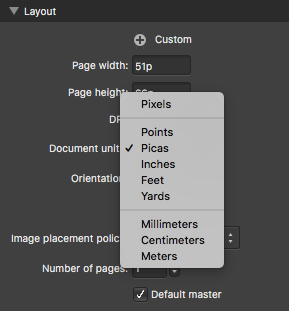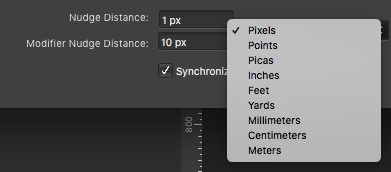Sheesh! This is the first time I’m replying/commenting to anything in Tidbits. I’ve been a tech guy since buying an Osborne 1 in the '80s. I taught and did tech support for Ashton-tate’s dBase products, FrameMaker before and after Adobe bought it, participated in several Adobe pre-release (AKA beta-test) programs over several decades. When I was a technical writer, there were corporate initiatives to strip us professionals out of the product development process because, after all, the thinking went, “the engineers and developers had been speaking all their lives, so what’s the big deal? Why can’t they write the documentation? In fact, we’re on the cusp of self-documenting engineering processes anyway, so who needs writers? And, besides, nobody reads documentation. It’s a waste of money.”
So, I’m shocked! shocked! to read through this thread. It’s an echo of stuff we’ve all read for as long as we’ve used any product and found venues to complain about them.
The authors of this book are not stupid people. In fact, from a quick read of their sample chapters, they’re probably super-brilliant. But, just because they’re smart enough to think so brilliantly about their fields of interest and expertise, and write about them so well, doesn’t mean they’re skilled enough to design and produce a book to contain their content and wrestle into submission, in a publication with a tool powerful enough to be equal to that task. It’s not trivial, no matter how simple a finished publication may appear.
In the olden days, publishing workflows included source-content creators, editors, fact-checkers, blah-blah, specialists of all kinds, just to create the content. Illustrators whose skills were not just artistic, but conceptual - how to make some kind of graphic example of an idea that could clearly communicate a literal thought quickly visually. Then there were the crews who’d put that matter onto pages, paginate them, coordinate cross-references, italicize foreign words within main content, follow all the style guide rules, etc. This was as collaborative as creating a theatrical movie. A team of skilled professionals. If you want a modern example, just patiently look at the credits for any Ken Burns, Frontline, or American Experience documentary on PBS to see what goes into a real production.
So, thinking that it’ll be as easy as plunking down some cash for a software tool that will transmogrify the intelligently-created content into a professional publication, is a wonderfully optimistic but wrong idea. The error is believing that the software can empower one individual with the range of skills that used to belong to that collaborative team of professionals.
Looking at the sample chapters, I can’t see anything that couldn’t have been put together with MS Word, if one had achieved sufficient skill with its tools, and had learned workarounds for its inadequacies and bugs. With a solid version of QXP, FrameMaker, or InDesign, one skilled with the tool could have done the work more efficiently and less painfully. Did anyone notice that links in the PDF index example aren’t live? Perhaps it’s by choice, to restrict the sample’s functionality, but perhaps it’s an oversight of setting up QXP’s PDF export. (If you open the PDF in Adobe Acrobat or equally-capable PDF reader tool, you can expose the identity of the tool that created the document. The sample was created with QXP.)
Thanks to those who said kind words here about FrameMaker. They are right, in the sense that it’s powerful. I didn’t see anyone mention that it can run just fine on Mac under Windows with Parallels or other virtual hosting software.
I’ve used InDesign since its inception. It’s great, but one needs to have the design and publishing expertise to use it well.
Simply put: just because you can get into a car’s driver seat doesn’t mean you have the skills to drive at speed safely in daily traffic in all kinds of weather, or even can change a flat tire on a side street on a nice spring day. Isn’t that why we have cells phones and AAA?
This isn’t to excuse Quark’s software problems or its poor customer support policies going back to day one. And it’s not to overlook the genuine pain the authors experienced in bringing their brainchild to publication. Readers and intellects everywhere will benefit from their efforts in pulling all those ideas and materials together.
IMO the lesson here is that it’s easy to bash stuff online. It was ever thus. It’s especially to pile-on bashing something that seems to deserve it. It’s easy to feel comfortable while bashing an easy target.
But, in all the product-specific forums I’ve observed over the years, the only solid argument about whether a tool is “good” is if it’s right for the task, and if the user has the skills to use it at its best.
As to the cost of an Adobe InDesign subscription, note that this is not a cheap book, it’s an expensive product. Cost of production is one ingredient. Consider that Creative Cloud subscriptions can be monthly or annually, for one or multiple products and multiple users. Like the insurance emu commercials say, “you can pay only for what you need.”
The real conceptual failure in this software mess is the expectation that any sophisticated software product can imbue an individual with all the skills and experience that once were distributed among teams of individual specialists who collaborated on creating great publications, From reading the comments here, some of you are such polymaths, but may not be content authors. So this emphasizes that the one option that was overlooked was that of collecting all of all of the content for this project, then hiring a book-production professional to put it together.
And don’t overlook the value embedded in all the hard-knocks experiences the authors collected first-hand and in the feedback in these comments. Stuff like this can’t be unlearned. it’s just a little surprising at how many times it seems to be repeating.
As to masochism… Back in the day, one of the long-time technical writers on the early Internet FrameMaker comp.text.frame forum, mused about the then-newish Adobe “boilerplate” placeholder text that began “Lorem ipsum…” Allegedly, a scholar had discovered an early clay tablet with that text, and had translated it, concluding that it had been written by indentured scribes - the counterparts to us modern=day technical writers. It translated to “We love to beat ourselves with sticks.” Allegedly.



 I remember early on reading about an engineer who’d written a 65-page with the DOS utility edlin, a line text editor that needed CR/LF at the end of each line. Almost any tool’s limitations can be overcome or even embraced, given sufficient persistence and willingness to learn coping skills.
I remember early on reading about an engineer who’d written a 65-page with the DOS utility edlin, a line text editor that needed CR/LF at the end of each line. Almost any tool’s limitations can be overcome or even embraced, given sufficient persistence and willingness to learn coping skills.